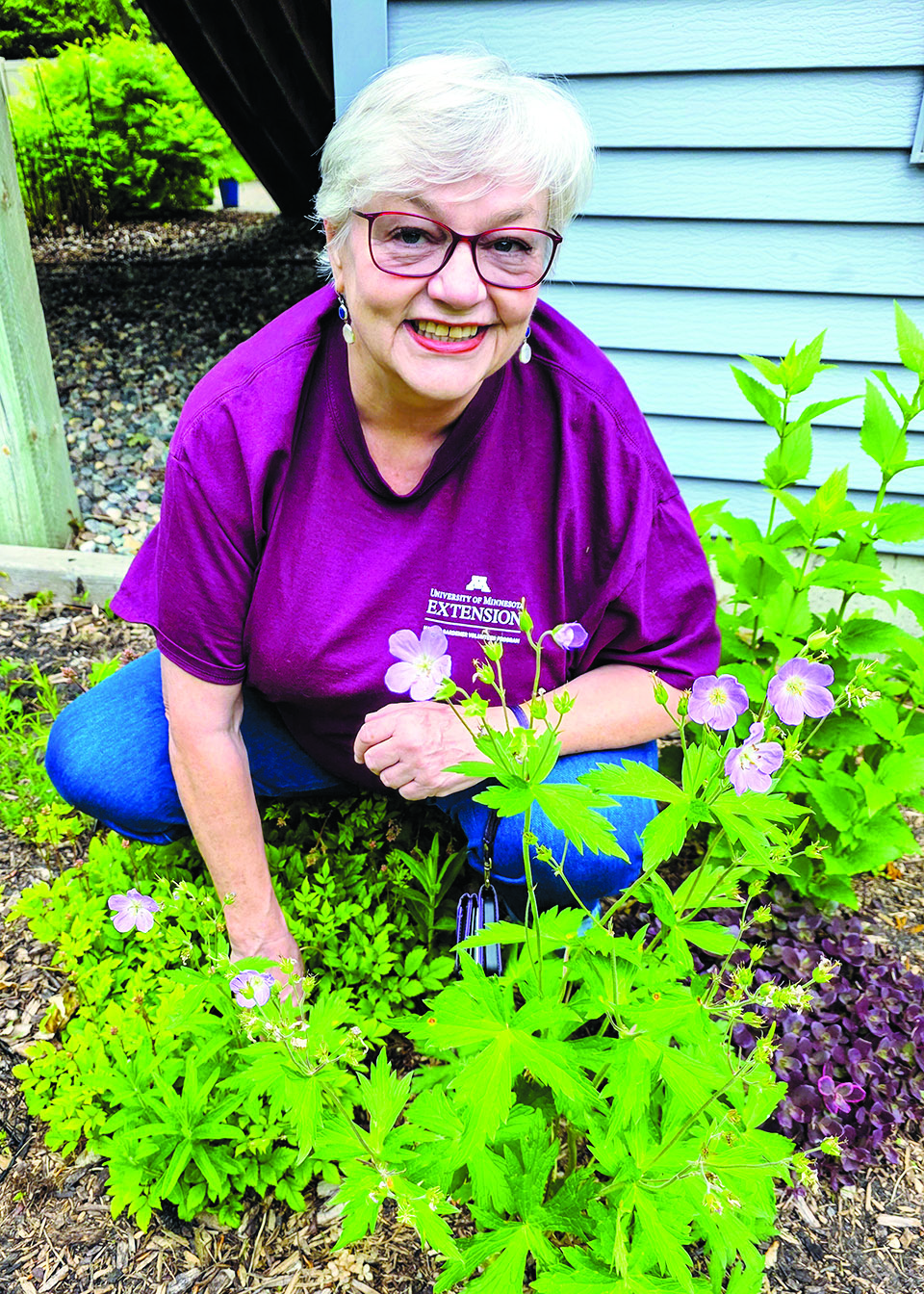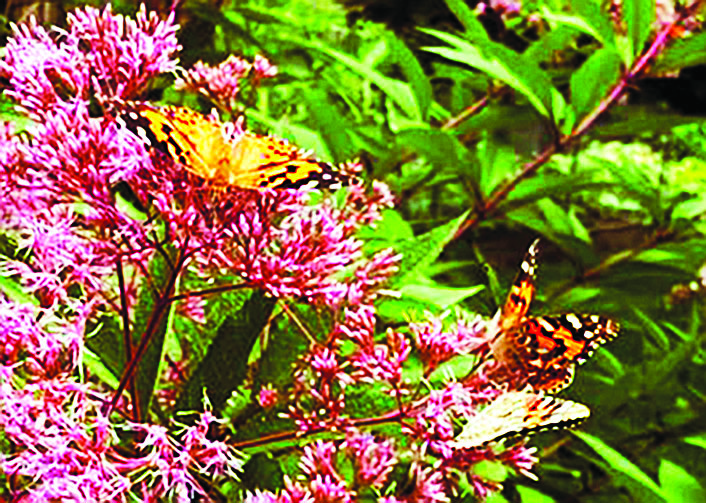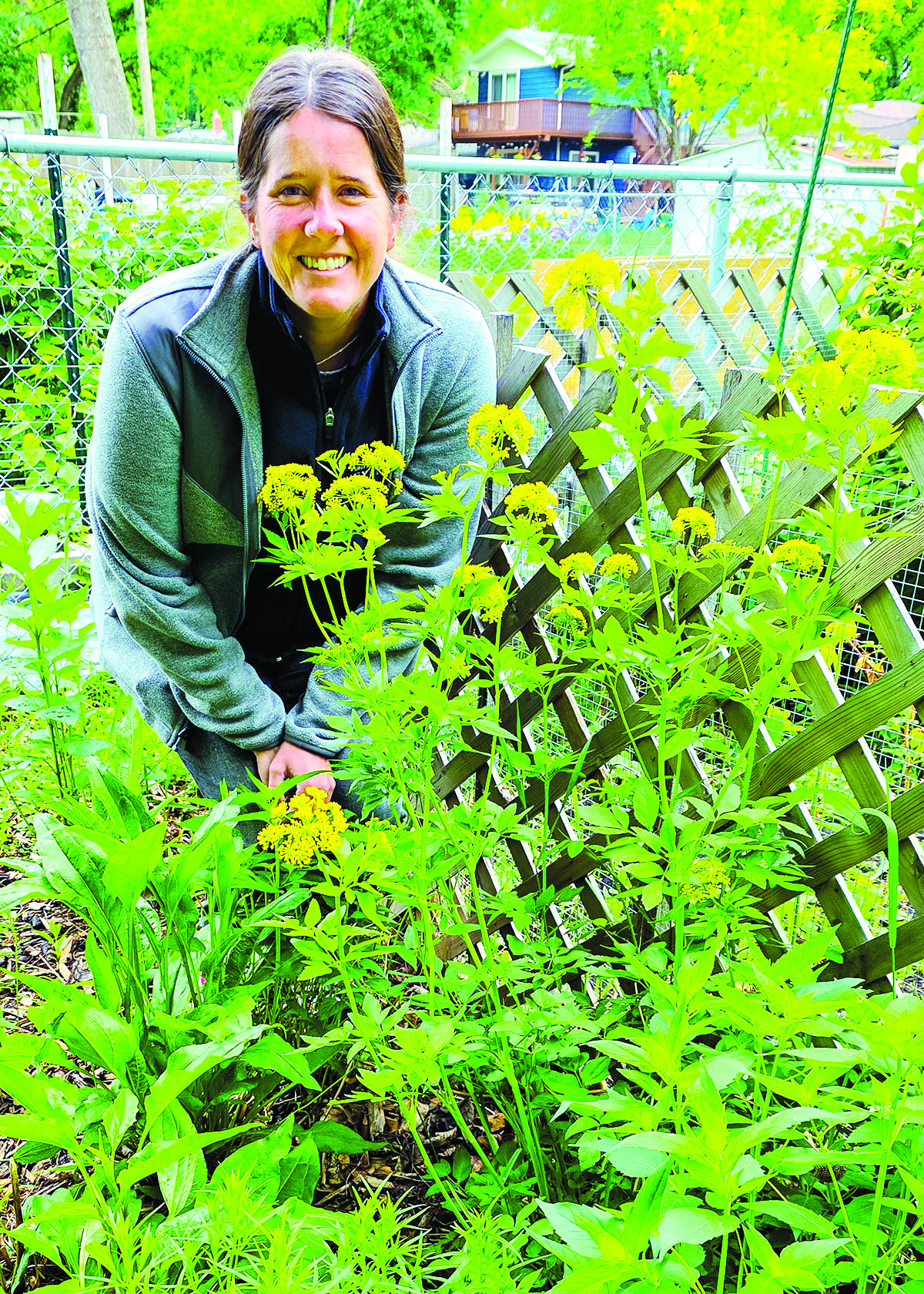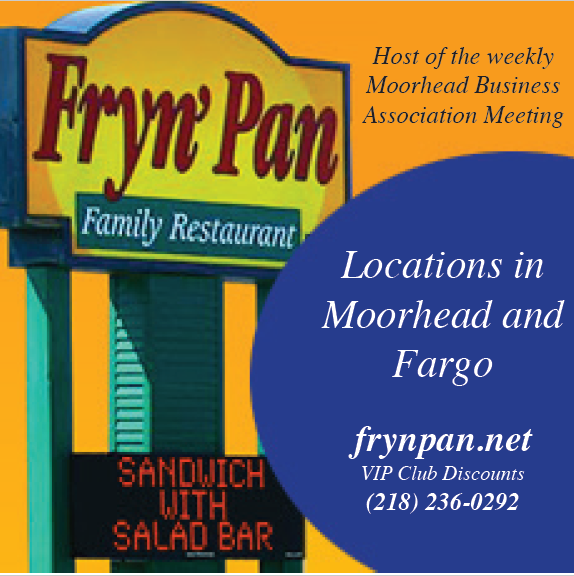
Master gardener Martha Wheeler — shown here with a young Wild Geranium — is turning her yard into a pollinator-friendly habitat. (Photos/Nancy Hanson.)
- Butterflies enjoy a pollinator-friendly Joe Pye Weed.
- Extension horticulturist Jillian Patrie has introduced Golden Alexander and Mountain Mint, both native to the region, into her yard in south Moorhead.
Nancy Edmonds Hanson
Some of the littlest creatures keep our world green and growing.
Countless insects are crucial contributors to the health of our planet, says Clay County master gardener Martha Wheeler. “Butterflies, bees and other insects play a huge role in producing our flowers and food,” she says. “But the native plants that make up their diet have been pushed out by turf lawns and monoculture.
“All of us can do something to support them – even something as simple as planting native asters in a pot on the patio.”
Martha, a Moorhead activist, has embraced the movement to support the beneficial insects for at least a decade. Spurred by the passion of University of Maryland entomologist Douglas Tallamy, she has taken up the cause he’s dubbed “home-grown national parks”: Helping homeowners turn their closely manicured turf-grass lawns into “pocket prairies” of native plants that nurture the region’s pollinators and wildlife – not only familiar Monarch butterflies but bumblebees, mason bees and almost 500 species more; Orange mint, skipper and hummingbird moths; solitary wasps (not the stinging kind); hoverflies and their native cousins; and countless others, including some ants and beetles.
Interest in supporting pollinators has ballooned in Fargo-Moorhead since the so-called “Monarch massacre” of 2020, when an ill-timed citywide application of insecticide resulted in the very visible death of uncounted thousands of Monarch butterflies. Moorhead subsequently joined the Mayors’ Monarch Pledge Cities, taking part in the national campaign to increase local habitat for the butterflies and other pollinators.
Martha and extension horticulture educator Jillian Patrie have put together an afternoon and evening to bring attention to the critically necessary pollinators and the plants they need to survive. The first FM Flutter Fest June 17 combines activities for kids and adults with education on how to turn your yard into a buffet for beneficial insects. The event in Gooseberry Park combines story-telling, hands-on planting and fun stuff – face painting, live music – with solid information on how to grow the good stuff. The event is free, thanks in large part to a grant from the Awesome Foundation.
Critical pollinators including the champions, native bees, are being starved out or displaced by non-native grassy yards and plantings of imported flowers and shrubs. “Many pollinators require specific native plants that have been depleted in our region,” she points out. “Monarch caterpillars, for example, expressly need milkweed. The larvae feed on it. They can’t survive without it. As a bonus, it protects them. Its sap is poisonous to birds, and the butterflies’ orange color warns them away.”
Other species, too, have specific hosts. Painted Lady butterflies prefer Joe-pye weed and purple coneflower. Black-eyed Susan, wild geranium, golden Alexander, mountain mint and many other regional natives, too, have their devoted fans, as do aronia, black chokecherry and serviceberry bushes.
Martha has turned seven areas at her home near The Meadows golf course into beds of native flowers, while Jillian’s back yard south of MSUM hosts a “pocket prairie” of native sumac, golden Alexander and other species. Some of the plants began their local life as seeds; the two gardeners bought others as plugs. “Some local greenhouses carry native species,” Martha observes. Information on other suppliers can be found on the Department of Natural Resources’ and the University of Minnesota’s websites.
Starting the natives in local soil requires patience, Martha reports. “For the first year, they’re small and only in the initial stage of growth. They double in size during the second. By the third year, you see them really fill out.”
Jillian adds, “That’s the bonus. Once they’re established, native plants generally take care of themselves.”
Martha’s enthusiasm for native plants and the pollinators that love them has grown into something of a personal mission. “I want people to know that all of us can do things that’ll have a huge impact on our environment,” she says. “We can all support ecology in whatever ways work for each of us.
“Growing pollinators doesn’t have to be a huge, giant, grand undertaking. You can start by doing just one thing, like planting native flowers in a pot on your patio … and make a genuine, long-lasting impact on our environment.”




